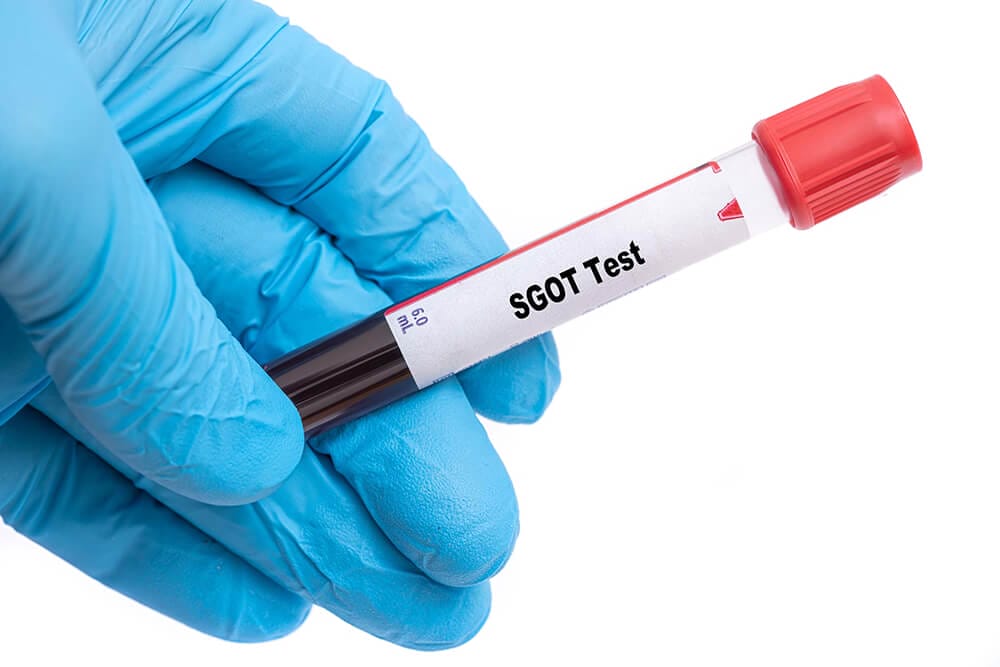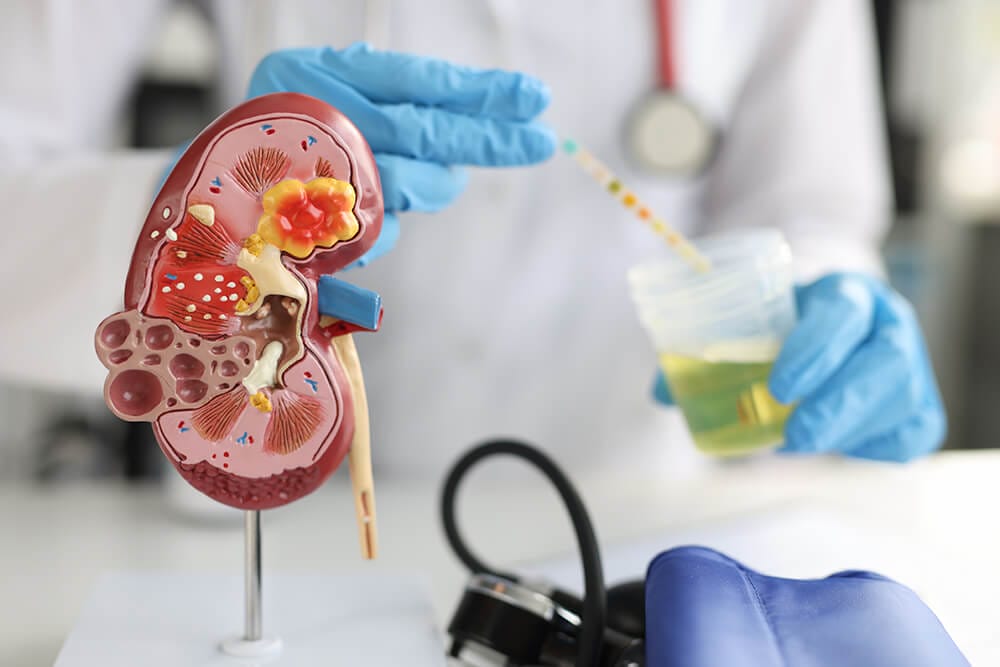
What Is SGOT Test And When Should You Go For It
Overview of SGOT
The SGOT test is usually prescribed for people who are at a risk of suffering from liver damage. The SGOT blood test helps doctors understand the levels of this enzyme in the blood, and, depending on the results, prescribe further tests to be sure of the condition, before starting a treatment. The SGOT test is also used to find out if the patient is suffering from hepatitis C.
SGOT test full form
SGOT or serum glutamic-oxaloacetic transaminase is another name for aspartate aminotransferase or AST. It is an enzyme produced mainly in the liver. But, the heart, kidneys and brain also produce some amount of this protein. Usually, a low level of SGOT in the bloodstream is considered normal. Often people who have suffered from a heart attack will have an elevated amount of aspartate aminotransferase in their blood system.
Purpose of the SGOT test
The serum glutamic-oxaloacetic transaminase or SGOT test is mainly done to check the condition of the liver. The primary function of the SGOT or AST enzyme is to help in amino acid metabolism. While the enzyme can be found in the cells of other vital organs, the AST or SGOT test is part of the liver panel tests. The SGOT test is usually prescribed when a person shows the following symptoms:
-
- Weight loss
- Nausea
- Weakness
- Yellowing of skin and whites of the eyes
- Pain and swelling in the abdomen, where the liver is present
- Dark color urine
- The stool is pale in color
- Visible swelling in ankles
- Frequent skin itching
- Loss of appetite
The test is also prescribed for people who:
-
- Have a family history of liver diseases
- Have recently been to a place with a high hepatitis contraction rate
- Are alcoholic, or were alcoholic
- Have diabetes
- Are obese
- Have non-alcoholic fatty liver disease
- Are undergoing treatment for existing liver diseases
How to prepare for the SGOT test?
The SGOT test is done by collecting blood samples from the patient or person suspected of having liver-related problems. The drawing of blood needs no special preparation from the patient’s side. But, there are certain factors that need to be determined prior to the actual process of blood collection.
Usually, the serum glutamic-oxaloacetic transaminase test can be done without fasting. But, if it is part of a panel, it is better to consult a doctor with regards to fasting and if any medications need to be stopped, so that results are accurate.
Procedure of the SGOT test
The procedure for the SGOT test is simple. The blood is collected from a vein. When the sample collection process starts, the phlebotomist requests the patient to sit in a comfortable yet upright position. Then, the phlebotomist looks for the vein that will be easy to access and from which the blood can be drawn without causing much pain to the person.
Once the blood is collected, the phlebotomist takes the syringe and empties the blood into vacutainers that are labeled. Once this is done, the insertion point is once again cleaned with an alcohol swab and a bandage is applied.
Side effects of the SGOT test
When blood samples are taken, there are practically no risks or side effects associated with the process. That said, when the serum glutamic-oxaloacetic transaminase or SGOT blood test is conducted as a part of a panel that requires fasting, then certain side effects can be seen. These include:
-
- Feeling light-headed
- Fainting
- Nausea
These can be dealt with by taking rest and eating nutrition-rich food. People whose veins are not easy to locate might have to get their arms punctured a few times, before the correct vein is found. This can cause stiffness and bruising in the arm. This is not serious and some rest can help get rid of these side effects. If the itching persists or the bleeding does not stop, contact a doctor immediately.
Interpretation of high SGOT test level results
The results for the SGOT blood test are received within a day. The amount of AST or SGOT in the blood is calculated in units per liter (units/L). The normal values can differ, given the age, gender and region/ethnicity of the person. But, the normal range is usually considered to be between 8 units/L to 40 units/L. For women, the range is narrower as compared to men.
When the result shows that the level of AST in the blood is higher than the normal range, it can indicate the onset or progression of liver disease. High AST levels indicate:
-
- Chronic hepatitis
- Cholestasis
- Cirrhosis
- Liver cancer
- Heart damage
- Kidney diseases
- Overdose of acetaminophen
- Recent history of surgery
- Burns
- Obesity
- Pancreatitis
When the test shows very high levels, it can indicate a short-term liver condition. But, if the level rises bit by bit with every test, it can indicate chronic conditions. This will prompt doctors to prescribe more tests. AST test results can also be false-positive. This means that the AST test result can indicate that a person has high AST, but other reports are normal. This can be due to:
-
- Diabetic ketoacidosis
- Consumption of antibiotics like para-aminosalicylic acid or erythromycin estolate.
Interpretation of low SGOT test level results
An enzyme is required in the correct amount by the body. As mentioned above, higher than normal levels indicate various disorders that prompt further tests and treatments. Being an enzyme, even lower than normal SGOT levels can indicate problems. Low levels may indicate:
-
- Deficiency of the vitamin B6 or pyridoxine
- Kidney disease
- Liver disease
- Cancer
- Genetic diseases
- Autoimmune diseases
Follow-up tests after SGOT test
The serum glutamic-oxaloacetic transaminase or SGOT test is often considered a panel test, especially for the liver function test. Other tests that are often associated with the AST or SGOT test are:
-
- Alanine aminotransferase or ALT test. It is also known as serum glutamic pyruvic transaminase or SGPT test. This test is more accurate when it comes to checking liver conditions, as this enzyme is majorly produced in the liver.
- Alkaline Phosphatase (ALP) test
- Platelet count
- Coagulation panel
- Complete metabolic panel that checks the electrolytes in the blood to understand the working of kidneys and liver
- Bilirubin test
- Albumin test
- Viral testing
- Glucose test
- Ultrasound imaging of the liver
Conclusion
The aspartate aminotransferase or AST is an enzyme that plays a vital role in helping monitor the functioning of the liver. This enzyme, along with alanine aminotransferase or ALT, is mainly found in the liver. But, there are conditions where the AST might be high, while ALT is low or normal. This leads to the doctors prescribing tests to monitor the heart and the kidneys.
FAQs
Can SGOT levels be lowered naturally?
When looking for lowering the SGOT levels naturally, it is advised to opt for a healthy lifestyle and include vitamin D in the diet. But, if the condition is genetic, it is recommended to opt for regular check-ups and monitoring of the liver function.
Can jaundice be detected from the SGOT test?
Since jaundice is a disease of the liver, an AST test can be used to determine the prognosis. But, opting for a liver function test will further help with proper diagnosis and treatment.
What tests are included in the liver panel?
There are a total of 9 (nine) tests that are considered to be part of the liver panel. These are: Aspartate aminotransferase (AST), Alanine transaminase (ALT), Alkaline phosphatase (ALP), Gamma-glutamyl transferase (GGT), Albumin, Total protein, Bilirubin, Lactate dehydrogenase (LD), and Prothrombin time (PT).

















